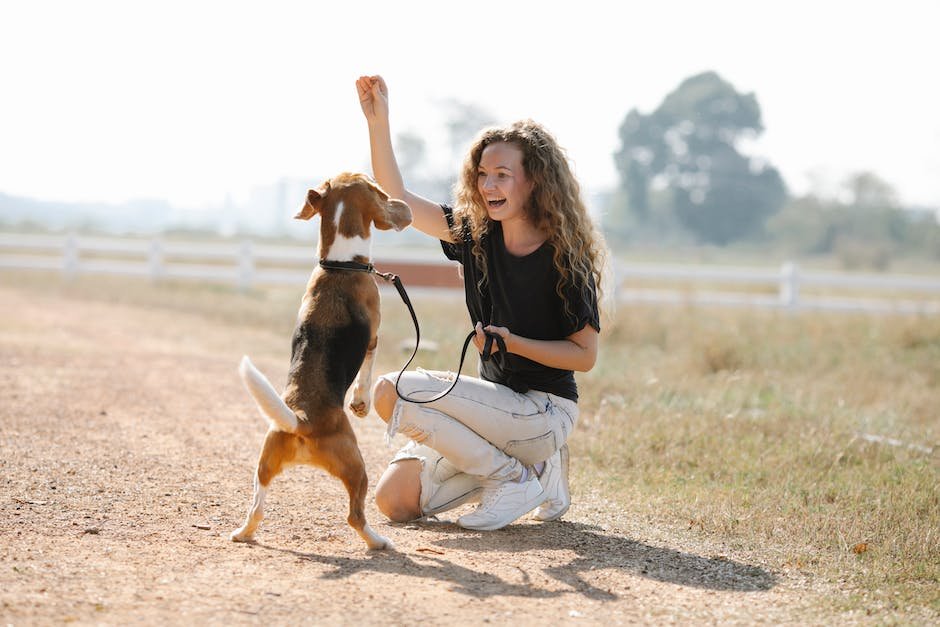As the morning sun peeks over the horizon, a sense of adventure fills the air, beckoning both dogs and their owners to embark on a journey through the great outdoors. With each wagging tail and bounding step, the world becomes an exhilarating playground for our four-legged companions. Yet, amidst the excitement and explorations, there lingers an underlying concern for their safety. This is where the unsung hero, the humble dog training ID tag, emerges as a crucial accessory that safeguards our furry friends in moments of uncertainty. Though often overlooked, these small, unassuming tags hold the key to reuniting lost dogs with their distraught owners, ensuring their well-being is protected at all times. This article delves into the significance of dog training ID tags, shedding light on the vital role they play in keeping our beloved canines secure, and the peace of mind they offer both pets and their humans alike.
Table of Contents
- The Importance of Dog Training ID Tags for Safety
- Ensuring the Well-being of Your Furry Companion: Why Dog Training ID Tags are a Critical Safety Measure
- Emergency Situations: How Dog Training ID Tags Can Save Lives
- Taking the Preventive Approach: The Benefits of Dog Training ID Tags for Stray and Lost Dogs
- Recommendations for Choosing the Perfect Dog Training ID Tag to Ensure Safety and Peace of Mind
- Q&A
- In Retrospect

The Importance of Dog Training ID Tags for Safety
Dog training ID tags serve as a crucial element for ensuring the safety of our beloved furry companions. These small but mighty tags act as a lifeline, providing vital information in case your dog ever goes missing or gets separated from you. They can make all the difference between a lost dog being reunited with their owner or remaining in the unknown.
By attaching a dog training ID tag to your canine’s collar, you are equipping them with a permanent identification that can be easily accessed and understood by anyone who finds them. This tag should contain essential details such as their name, your contact information, and any medical conditions they may have. Make sure to include a reachable phone number and consider using a secondary contact in case you are unavailable.
In addition to providing identification, dog training ID tags can also communicate specific messages that promote your dog’s safety. For instance, you can include messages like “I’m friendly” or “I’m nervous” on the tag, helping others understand how to approach or handle your dog appropriately. This information is especially crucial for dogs that may have behavioral issues or require special care.
-
Increased chances of doggy reunions: Should your dog wander off, a visible and easily readable ID tag increases the odds of a passerby noticing and contacting you promptly.
- Quick and easy identification: In emergencies or accidents, a dog training ID tag helps establish immediate ownership, reducing the time it takes for a lost dog to be returned to their anxious owner.
- Promotes responsible pet ownership: By having an ID tag on your dog’s collar, you are exemplifying the importance of ensuring your pet’s safety, which may encourage others to do the same.
In conclusion, dog training ID tags are not mere accessories; they are essential tools for safeguarding our four-legged friends. They provide a means of identification, increase the chances of reunions, and even offer helpful messages to those who encounter your furry companion. So, don’t underestimate the power of these miniature lifesavers—your dog’s safety may depend on it.

Ensuring the Well-being of Your Furry Companion: Why Dog Training ID Tags are a Critical Safety Measure
When it comes to the safety of our beloved four-legged friends, every precaution should be taken. One crucial safety measure that all dog owners should consider is investing in a high-quality training ID tag for their furry companions. This small yet mighty tag can provide peace of mind and ensure the well-being of your dog in various ways.
Identification: Firstly, a dog training ID tag acts as a visible form of identification for your pet. In the unfortunate event that your dog gets lost, a quick glance at their ID tag can provide crucial information such as their name, your contact details, and even medical information. This greatly increases the chances of a quick reunion, as anyone who comes across your dog can easily identify them and reach out to you.
Safety during training: Training your dog is an essential part of their development, but it often involves being in unfamiliar environments or encountering new people and animals. By attaching a training ID tag to your dog’s collar, you provide an extra layer of safety. In case of any unexpected incidents or miscommunications during training, the tag acts as a clear indicator that your dog is in the process of learning and may require additional guidance.
Enhanced visibility: Another invaluable benefit of dog training ID tags is their potential to enhance your furry friend’s visibility. Whether you’re out for a walk at dusk or letting your dog explore a park, having a reflective or vibrant ID tag can make them more noticeable to drivers, cyclists, and other pedestrians. This added visibility minimizes the risk of accidents and ensures that your furry companion remains safe and visible, even in low-light situations.

Emergency Situations: How Dog Training ID Tags Can Save Lives
In times of emergency, every second counts. That’s why having dog training ID tags can be a lifesaver for our beloved furry friends. These tags are not just for identification purposes, but they can play a crucial role in ensuring the safety and well-being of our dogs in emergency situations.
When disaster strikes, and we find ourselves separated from our pets, a dog training ID tag can provide vital information to rescuers or Good Samaritans who come across our lost companions. By including crucial details such as the dog’s name, owner’s contact information, and any medical conditions, these tags can significantly increase the chances of a safe and timely reunion.
Moreover, dog training ID tags can also serve as a reminder to others about our pet’s training needs. For instance, tags that mention “in training” or “needs space” can alert people to approach with caution, especially if our dog is anxious or reactive. By clearly communicating these instructions through the tag, we can contribute to a safer environment for both our pets and the people around them.
In summary, dog training ID tags are much more than just decorative accessories for our four-legged companions. They are valuable tools that can potentially save lives during emergency situations. By providing critical information and indicating our pet’s training needs, these tags become an essential part of our dogs’ survival toolkit. So, make sure your furry friend is always equipped with a dog training ID tag, because you never know when it might be the key to their safe return home.
Taking the Preventive Approach: The Benefits of Dog Training ID Tags for Stray and Lost Dogs
Taking the preventive approach can greatly minimize the risks faced by stray and lost dogs. One effective tool in ensuring their safety is the use of dog training ID tags. These tags not only act as a form of identification but also serve as a means to communicate vital information about the dog.
When it comes to identification, dog training ID tags play a crucial role. They typically include the name of the dog, owner’s contact information, and sometimes even the address. By having this information readily available on the tag, it becomes easier for anyone who finds a stray or lost dog to contact its owner promptly. This saves valuable time and increases the chances of reuniting the dog with its loving family.
In addition to identification, dog training ID tags can also convey important details about the dog’s behavior and needs. Such information can be instrumental in ensuring the safety and well-being of the dog. For instance, tags can indicate if the dog is anxious, has medical conditions, or is fearful of certain situations. This knowledge enables others to approach and handle the dog appropriately, reducing the likelihood of any distress or harm. Furthermore, including tags with details about specific training the dog has undergone can help prevent unwanted behavior, making it easier for the finder to handle the dog until they can reach its owner.
Using dog training ID tags is an effective preventive measure that offers immense benefits for stray and lost dogs. By providing clear identification and essential information, these tags increase the chances of a lost dog being reunited with its owner and ensure that the dog receives appropriate care and attention while in the hands of a well-meaning finder. Embracing this proactive approach demonstrates a genuine commitment to the safety and welfare of our furry friends.
Recommendations for Choosing the Perfect Dog Training ID Tag to Ensure Safety and Peace of Mind
Dog training ID tags are a crucial accessory for every responsible pet owner. Not only do they serve as a means of identification, but they also contribute to the safety and well-being of your furry friend. When it comes to choosing the perfect dog training ID tag, there are several factors to consider.
Material: Look for tags made from durable materials such as stainless steel or brass. These materials are not only long-lasting but also resistant to rust and corrosion, ensuring that your dog’s ID tag remains intact even in challenging outdoor conditions.
Design: Opt for a tag that allows you to include all the essential information without compromising on aesthetics. Keep in mind that the text should be clear and easy to read. Consider adding your dog’s name, your contact number, and any crucial medical information that might be useful in case of emergencies.
Size and Shape: Choose a tag that is proportionate to your dog’s size. A tag that is too large or heavy can cause discomfort and irritation for your pet. Additionally, consider the shape of the tag - rounded edges are ideal to prevent sharp corners from scratching your dog or snagging on objects.
Attachment: Ensure that the tag comes with a secure and reliable attachment mechanism, such as a sturdy split ring or a durable clip. This will prevent the tag from getting easily lost during training sessions or outdoor adventures.
By following these recommendations and choosing the perfect dog training ID tag for your furry companion, you can ensure their safety and bring yourself peace of mind knowing that they are properly identified and protected at all times.
Q&A
1. Why are dog training ID tags important for safety?
Dog training ID tags are important for safety as they provide crucial information about your dog, such as its name, your contact details, and any important medical information. In case your dog gets lost, these tags can help identify and reunite you with your furry friend.
2. How do dog training ID tags contribute to overall safety?
Dog training ID tags contribute to overall safety by acting as a visible form of identification for your dog. If your furry friend ever wanders off, these tags make it easier for others to identify your dog and contact you promptly.
3. What information should be included on a dog training ID tag?
A dog training ID tag should include your dog’s name, your contact details such as your phone number, and any important medical information about your pet. This information helps ensure a swift return home in case your furry companion gets lost.
4. Are there any legal requirements for dog training ID tags?
Laws vary depending on your geographic location, but many jurisdictions require dogs to wear ID tags with their owner’s contact information. Researching local pet regulations is crucial to ensure compliance with any legal requirements.
5. Can’t microchipping replace the need for dog training ID tags?
While microchipping is an excellent additional safety measure, it should not replace dog training ID tags. ID tags are easily visible and can be read by anyone who finds your dog, allowing for a quicker and more straightforward reunion process.
6. How can dog training ID tags help in emergency situations?
In emergency situations, dog training ID tags can provide vital information to first responders or Good Samaritans who come across your dog. Information like your phone number or any medical conditions can help ensure the prompt and appropriate care of your furry friend.
7. What are some tips for keeping dog training ID tags securely attached?
To keep dog training ID tags securely attached, consider using sturdy and durable tags made of materials like stainless steel or brass. Additionally, using a collar or harness with a secure clasp and regularly checking the condition of your dog’s tags can help prevent accidental loss.
In Retrospect
As we wrap up this enlightening exploration of the importance of dog training ID tags for safety, it’s hard not to feel a sense of profound admiration for our loyal, four-legged companions. They shower us with unconditional love and devotion, reminding us that the profound bond between humans and dogs is an enduring one.
Today, we’ve delved into the world of dog training ID tags, unearthing a treasure trove of insights designed to secure the safety and well-being of our furry friends. We’ve learned that these petite little marvels possess the power to transform a pet’s life, opening doors to a world where reassurance and safeguarding reign supreme.
Every day, countless stories emerge, detailing heart-wrenching accounts of lost dogs and the anguish experienced by their heartbroken owners. Yet, amidst the shadows of despair, a beacon of hope emerges in the form of dog training ID tags, offering a chance for a reunion filled with joy and relief.
These tiny but mighty tags are no longer mere trinkets dangling from our pets’ necks. They are emblems of responsibility, empathy, and defense, silently conveying vital details that can make all the difference in the face of adversity. From contact information to health concerns, they grant peace of mind to both pet owners and encounterers, guiding lost souls back to their loving homes.
In the grand tapestry of life, safety is an undeniably paramount concern, traversing the realms of human and canine existence alike. As we don these badges of preparedness, we take a pledge to protect our loyal companions in times of trouble. For, in the enchanting world of dog training ID tags, every jingle brings forth a symphony of reassurance, proclaiming to the world: “I am loved, I am protected, I am cherished.”
So, whether you’re a seasoned pet owner or embarking upon the wondrous journey of canine companionship, remember the significance these unassuming tags carry. Let them serve as a reminder of the immense power we possess to keep our beloved friends safe, tethered to us both figuratively and literally.
As we bid adieu, let us always embrace the importance of dog training ID tags for safety, offering them the reverence and credibility they deserve. For by protecting our furry companions, we weave a beautiful tapestry of security, love, and the profound connection that binds humans and their remarkable four-legged friends.
As an affiliate, my content may feature links to products I personally use and recommend. By taking action, like subscribing or making a purchase, you’ll be supporting my work and fueling my taco cravings at the same time. Win-win, right?
Want to read more? Check out our Affiliate Disclosure page.